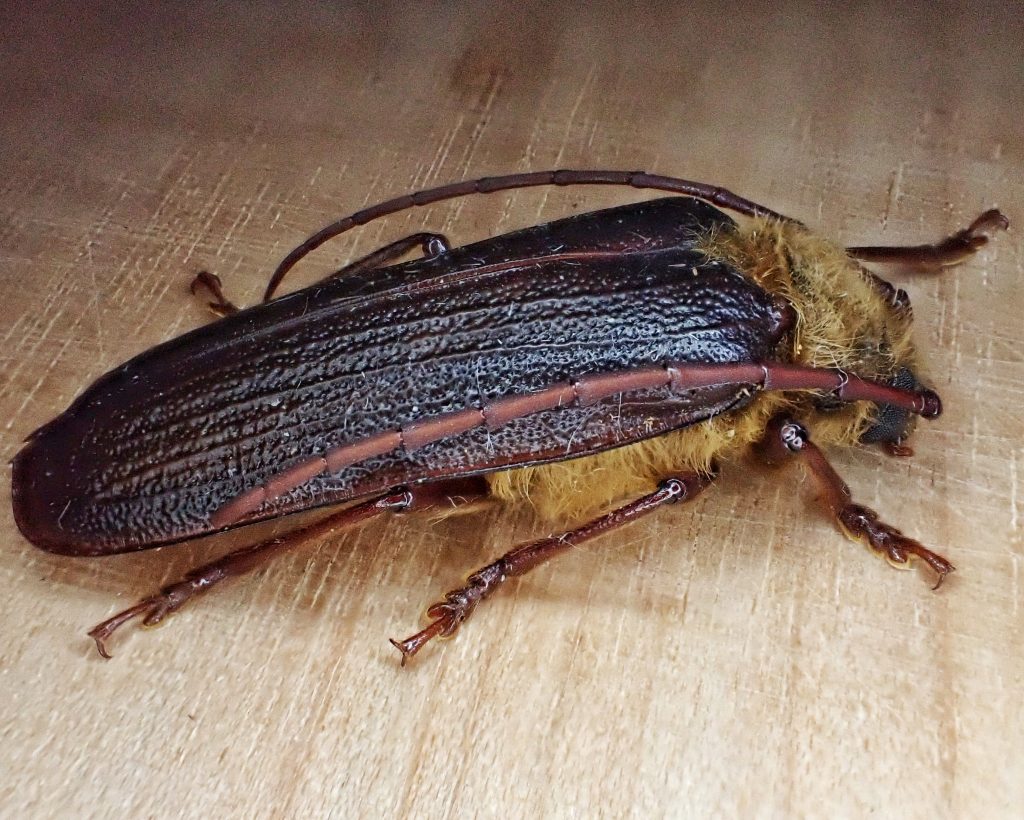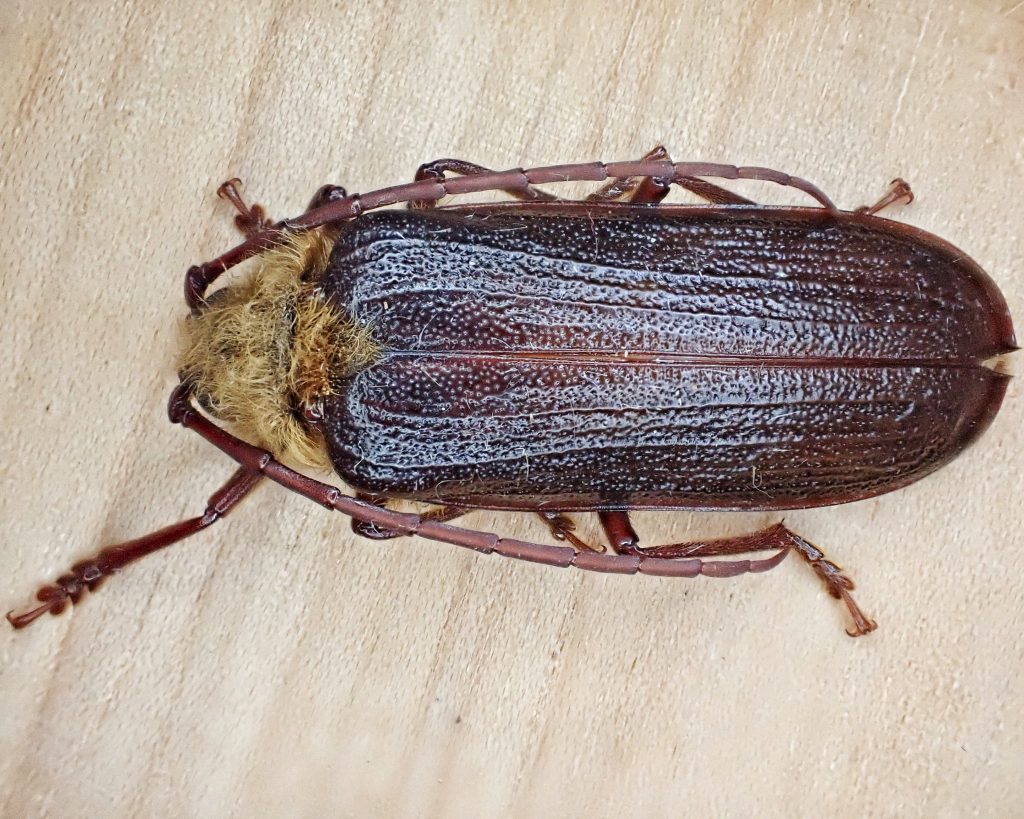
The first time I found one of these Tragosoma beetles was last September while running lights at Lost Creek, up in the Gifford Pinchot NF near South Prairie. At the time I was sure I knew what it was- Tragosoma depsarium. So I didn’t bother to collect it, just took way too many photos in a big-beetle induced frenzy. And I was very excited to profile it, because large bugs are just very cool. But then I found out it was definitely not Tragosoma depsarium, which has been found to be a strictly Eurasian species (Serge Laplante; 2017; “Description of a new Nearctic species of Tragosoma Audinet-Serville (Coleoptera: Cerambycidae: Prioninae), with species validations, new synonymies and a lectotype designation”).

So Tragosoma harrisii has now been elevated to full species status. But Laplante discovered that many of the beetles he was looking at were neither T. depsarium nor T. harrisii and he described yet another very similar species, T. soror, and they could only be differentiated using traits not visible in any of my photos. This of course bummed me out, since it had taken so long to find one in the first place, but I hoped to get lucky again since these beetles are known to come to lights. And finally, as I mentioned in 6th Night of Moth Week , I got another Tragosoma at my Temple of Ultraviolet Light.

This time I captured it and brought it home, but even after prolonged refrigeration it would not allow me to examine the lateral spines on its pronotum (the primary difficulty being that they were mostly hidden in the hair), and it wouldn’t stay motionless long enough to determine the extent of puncturing on its 3rd antennomere. So reluctantly I euthanized it in the freezer, and was then able to determine that the lateral pronotal spikes were broadly tapering, and antennomere #3 was only punctured for half its length, so that I am now able to say with conviction that this beetle is Tragosoma harrisii. I see this large longhorn beetle going by the common names of hairy pine borer and Harris’ gladiator longhorn beetle in some sources, but BugGuide doesn’t list a common name for this species.

Description– Large (18-36mm) brown longhorn beetle with rusty brown hair covering the pronotum and most of the body; legs and antennae reddish brown, and antennae have cylindrical segments; antennomere 3 with punctures on only half; pronotal margin with a single, broadly tapering spike on each side.
Similar species– Tragosoma soror has antennomere 3 with punctures over entire length, and T. soror and T. spiculum have lateral spike on less hairy pronotum much narrower; Prionus have thicker, serrated antennae; Trichocnemis spiculatus is much larger and has a hairless pronotum.

Habitat– Conifer forests
Range-North America; found region wide in the PNW in appropriate habitat.
Eats– Larvae consume the decaying wood of rotting pine and Douglas-fir logs.
Eaten by-Presumably a host for parasitoids in Hymenoptera and Diptera, and probably preyed upon by insectivores of all classes, but I can find nothing specific for this species.

Adults active– Nocturnal, and attracted to lights; mid June into September, with the peak in July and August.
Life cycle– Based on the formerly synonymous Tragosoma depsarium, these beetles probably require at least three years to mature.

Etymology of names– Tragosoma appears to be from the Greek words for ‘goat body’, possibly because of the spikes on the pronotum, but I cannot verify what Audinet-Serville was actually referring to. The specific epithet harrisii is from a “Dr. Harris, to whom this species is dedicated”, who apparently collected specimens of it in New Hampshire for LeConte, but about whom I can find no other information.

Species Tragosoma harrisii – BugGuide.Net

Face it. You have a Cerambycid addiction.
Possibly so, Robert, although they are going to have to get in line with all of the other bugs I’m obsessed by😀
I believe I’ve just captured this in Northern Utah while standing on the porch this evening. Added it to our wet specimen collection.
Very cool! Did you happen to check the antenna to see if it was T. soror or T. spiculum?
You should add a “yeeted by” section to your profiles!
Yeeted by Kat from her neck while driving last Sunday.
It would be startling to have one of these hit you will driving. I’ve yeeted 10-lined June bugs when hiking!